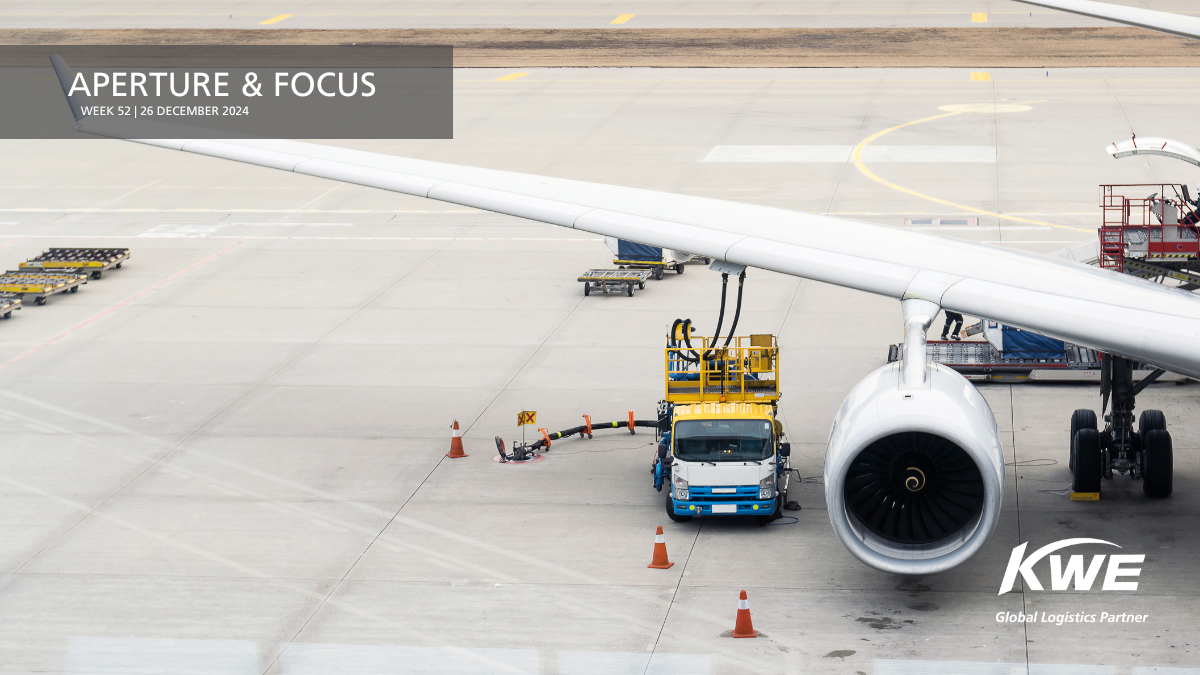Quote
Aperture & Focus: Week 52

Global Aperture
In its 2025 outlook, analytics platform Xeneta noted that the air freight industry has experienced 13 consecutive months of double-digit year-on-year volume growth, driven by the Red Sea crisis and an e-commerce boom. Looking ahead, potential challenges such as tariffs, maritime strikes, and new shipping networks could impact the industry, with concerns about limited capacity to handle sudden shifts in demand.
Regional Focus
Americas
United States: U.S. container ports have experienced fourteen consecutive months of growth, with November's inbound volumes increasing by 13.1% year-over-year across the nation's ten largest ports. This surge is attributed to factors such as ongoing consumer demand as well as the surge of imports as shippping accelerates ahead of potential tariffs and labor disputes.
Air cargo volumes to the U.S. have seen an unexpected surge from mid-December, driven by shippers expediting deliveries ahead of anticipated tariff changes under President-elect Donald Trump. This trend is expected to continue through late January, compounded by port strikes and heightened holiday demand.
With the January 15, 2025, expiration of the master contract for U.S. East and Gulf Coast dockworkers approaching, carriers like Maersk, Hapag-Lloyd, and CMA CGM are advising customers to prepare for potential disruptions. The International Longshoremen’s Association (ILA) and the U.S. Maritime Alliance (USMX) have not reached an agreement, increasing the likelihood of a strike starting January 16. Shippers are encouraged to expedite container movements and complete necessary documentation to mitigate potential supply chain disruptions.
Asia-Pacific
China: The Port of Shanghai has achieved a historic milestone, becoming the first in the world to handle over 50 million TEUs annually. This record was driven by its extensive network of 350 international routes connecting to over 700 ports across 200+ countries, along with increased export containers, higher international transfers, and record-setting ship-to-ship operations. Advanced automation at the Yangshan terminal and green initiatives aim to enhance efficiency and position the port as a leader in sustainable shipping by 2030.
India: Kamarajar Port Limited (KPL) near Chennai is undergoing major upgrades to expand its cargo handling capacity from 57.5 million tonnes per annum (MTPA) to 254.5 MTPA by 2047. These enhancements, including new terminals and improved connectivity, are expected to boost efficiency and make KPL a critical hub for India's logistics industry, facilitating smoother trade flows that align with Maritime India Vision 2030.
Europe, Middle East & Africa
European Union: The European Commission has introduced a Flight Emissions Label (FEL), set to launch by July 2025, to provide standardized emissions data during the flight booking process. This initiative aims to enhance transparency, promote sustainable travel choices, and support aviation's transition to net-zero emissions by incentivizing Sustainable Aviation Fuels and fleet modernization.
The European Union's FuelEU Maritime regulation is set to take effect on January 1, 2025. While the intent of this bill is to reduce the greenhouse gas intensity of maritime fuels by 2% and advance decarbonization, it is expected to significantly increase shipping fuel costs. Compliance options for carriers include using biofuels, transitioning to low-carbon alternatives, or joining emissions pooling systems, but these measures are likely to lead to higher freight rates for shippers. Non-compliance penalties, estimated at $65 per ton of fuel, add further cost pressures, underscoring the importance of proactive planning for supply chain stakeholders.